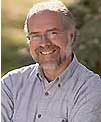Last winter I gained 10 lbs. I could not blame it on age, genetics, prescription medication, hormonal changes, or other illnesses. It was as clear as spring water: I ate too much and exercised too little. That nice tasting winter lager in front of the fireplace, that wine that goes along with a good meal (alcohol has 7 calories/gram, compared to protein and carbs, which have 4/g), the sweets during the holidays and less physical activity due to snow contributed to my stately gain.
Experts agree that obesity is caused by a combination of excessive dietary calories , lack of physical activity, and genetic susceptibility . Only a few cases are caused primarily by genes , endocrine disorders, medications or psychiatric illness. Evidence to support the view that some obese people eat little yet gain weight due to a slow metabolism is very limited. Science shows that genetics plays a role in obesity. However genes do not always predict future health. Genes and behavior are both needed for a person to be overweight. In some cases multiple genes may increase one’s susceptibility for obesity and require outside factors; such as abundant food supply or little physical activity. The fact that obesity has increased so much in the last few decades appears to discount genetics as a major main cause. Also, the fact that each succeeding generation is heavier than the last indicates that changes in our environment are playing the key role. It takes genes much longer than one generation to mutate
The type of food eaten plays an important role in the rise of obesity. Parental food choices imprint the child’s choices significantly. Researchers continue to discover more metabolic and digestive disorders resulting from overconsumption of trans-fats and refined white flour carbohydrates combined with low fiber intake. These eating patterns are known to interfere with food and energy metabolism in the body, and cause excessive fat storage. These metabolic and digestive disorders include insulin resistance, type 2 diabetes as well as obesity. Incidence of these “modern” diseases is increasing worldwide
Daily intake of 50 calories more than the body can process results in a 5 lbs weight gain in one year, or looking at the bright side, 50 calories less consumed daily than the body needs for healthy function results in a 5 lbs weightloss in one year. Examples of 50 calories are 4 ounces of unsweetened applesauce sprinkled with cinnamon, 1 mini box of raisins, 12 fresh cherries, 14 red grapes, or 1/2 banana
What about exercise? Any exercise is good. 20 minutes of vigorous exercise burns 50 calories. Researchers in Australia have tried to find the most effective pacing for interval training. They’re focused on bringing the approach to folks who are pudgy around the middle and older than 40. “Everybody can do 8-second sprints,” says Steve Boutcher, a professor of exercise science at the University of New South Wales. His studies have documented the benefits of 20-minute workouts on stationary bikes. Participants cycled three times per week. They alternated between 12 seconds of slow, gentle peddling and 8- second intense sprints, peddling as hard as they could. “In the 20-minute bout,” Boutcher says, the actual hard exercise totaled just 8 minutes, “so it’s not that much exercise.” But the payoff was significant: Over the course of four months, participants lost an average of 6 pounds of body fat. By comparison, those who cycled at a steady pace for 40 minutes, without mixing in the interval sprints, lost less than 2 pounds
The conclusion is clear: eat less and exercise more. The best feedback from your body that you are doing the right thing is hunger. Restrict your portions to one serving, skip deserts, drink water rather than juice or alcohol, leave the table with your stomach half full, and when you feel hungry welcome this sensation but do not give in.

Peter Hinderberger, M.D., Ph.D., DIHom practices at Ruscombe. The mission of his practice is to promote optimal wellbeing by providing health care through an integrated approach, combining conventional and complementary therapies, which include Anthroposophic medicine, homeopathy, and salutogenesis.
